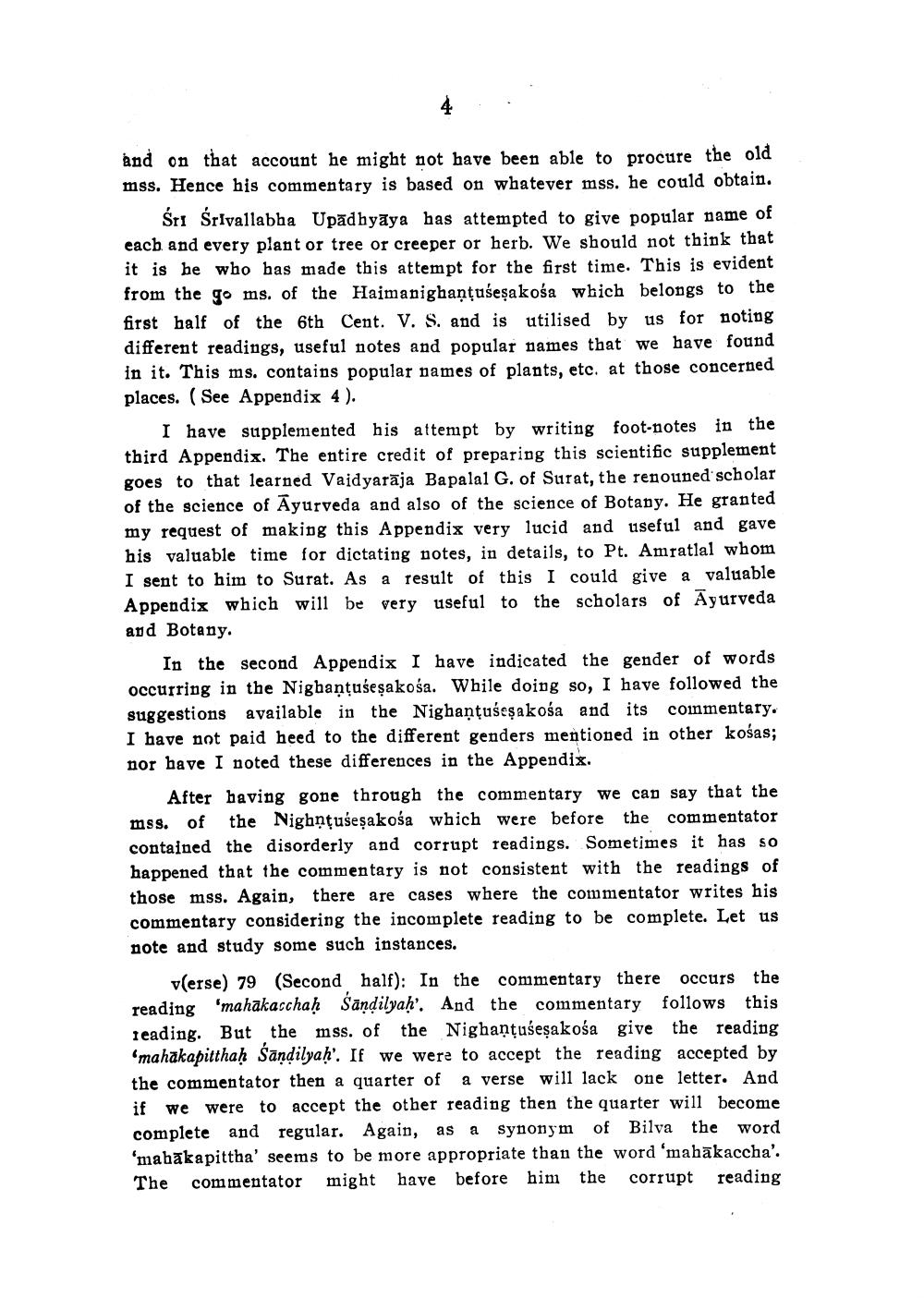Book Title: Nighantu Shesh Author(s): Punyavijay Publisher: L D Indology Ahmedabad View full book textPage 9
________________ and on that account he might not have been able to procure the old mss. Hence his commentary is based on whatever mss. he could obtain. Sri Srivallabha Upadhyaya has attempted to give popular name of each and every plant or tree or creeper or herb. We should not think that it is he who has made this attempt for the first time. This is evident from the go ms. of the Haimanighantusesakosa which belongs to the first half of the 6th Cent. V. S. and is utilised by us for noting different readings, useful notes and popular names that we have found in it. This ms. contains popular names of plants, etc. at those concerned places. (See Appendix 4). I have supplemented his attempt by writing foot-notes in the third Appendix. The entire credit of preparing this scientific supplement goes to that learned Vaidyaraja Bapalal G. of Surat, the renouned scholar of the science of Ayurveda and also of the science of Botany. He granted my request of making this Appendix very lucid and useful and gave his valuable time for dictating notes, in details, to Pt. Amratlal whom I sent to him to Surat. As a result of this I could give a valuable Appendix which will be very useful to the scholars of Ayurveda and Botany. In the second Appendix I have indicated the gender of words occurring in the Nighankusesakosa. While doing so, I have followed the suggestions available in the Nighantusesakosa and its commentary. I have not paid heed to the different genders mentioned in other kosas; nor have I noted these differences in the Appendix. After having gone through the commentary we can say that the mss. of the Nighntusesakosa which were before the commentator contained the disorderly and corrupt readings. Sometimes it has so happened that the commentary is not consistent with the readings of those mss. Again, there are cases where the commentator writes his commentary considering the incomplete reading to be complete. Let us note and study some such instances. v(erse) 79 (Second half): In the commentary there occurs the reading 'mahakacchah Sandilyah'. And the commentary follows this reading. But the mss. of the Nighantusesakosa give the reading mahakapitthah Sandilyah'. If we were to accept the reading accepted by the commentator then a quarter of a verse will lack one letter. And if we were to accept the other reading then the quarter will become complete and regular. Again, as a synonym of Bilva the word 'mabakapittha' seems to be more appropriate than the word 'mabakaccha'. The commentator might have before him the corrupt readingPage Navigation
1 ... 7 8 9 10 11 12 13 14 15 16 17 18 19 20 21 22 23 24 25 26 27 28 29 30 31 32 33 34 35 36 37 38 39 40 41 42 43 44 45 46 47 48 49 50 51 52 53 54 55 56 57 58 59 60 61 62 63 64 65 66 67 68 69 70 71 72 73 74 75 76 77 78 79 80 81 82 83 84 85 86 87 88 89 90 91 92 ... 414
